 Music
Music  Music
Music  History
History 10 Less Than Jolly Events That Occurred on December 25
 Weird Stuff
Weird Stuff 10 Funny Ways That Researchers Overthink Christmas
 Politics
Politics 10 Political Scandals That Sent Crowds Into the Streets
 Weird Stuff
Weird Stuff Ten Bizarre Facts About The Doge Meme
 Our World
Our World 10 Ways Your Christmas Tree Is More Lit Than You Think
 Movies and TV
Movies and TV The 10 Coolest Stars to Set Sail on The Love Boat
 History
History 10 Things You Didn’t Know About the American National Anthem
 Technology
Technology Top 10 Everyday Tech Buzzwords That Hide a Darker Past
 Humans
Humans 10 Everyday Human Behaviors That Are Actually Survival Instincts
 Music
Music 10 Surprising Origin Stories of Your Favorite Holiday Songs
 History
History 10 Less Than Jolly Events That Occurred on December 25
 Weird Stuff
Weird Stuff 10 Funny Ways That Researchers Overthink Christmas
Who's Behind Listverse?

Jamie Frater
Head Editor
Jamie founded Listverse due to an insatiable desire to share fascinating, obscure, and bizarre facts. He has been a guest speaker on numerous national radio and television stations and is a five time published author.
More About Us Politics
Politics 10 Political Scandals That Sent Crowds Into the Streets
 Weird Stuff
Weird Stuff Ten Bizarre Facts About The Doge Meme
 Our World
Our World 10 Ways Your Christmas Tree Is More Lit Than You Think
 Movies and TV
Movies and TV The 10 Coolest Stars to Set Sail on The Love Boat
 History
History 10 Things You Didn’t Know About the American National Anthem
 Technology
Technology Top 10 Everyday Tech Buzzwords That Hide a Darker Past
 Humans
Humans 10 Everyday Human Behaviors That Are Actually Survival Instincts
10 Dark And Unsettling Rituals Of Death And Immortality
For centuries, mankind has taken comfort through the performance of rituals. Religion is built on the idea, and it allows us to feel as though we’re a part of a larger, more enduring whole. It’s a nice idea, but some of history’s rituals were pretty dark. Be it human sacrifice, celebrating under the influence of mind-altering substances, or attempting to summon demons, mankind has come up with some ridiculously unsettling stuff.
10 The Sacrificial Ritual Of The Khonds
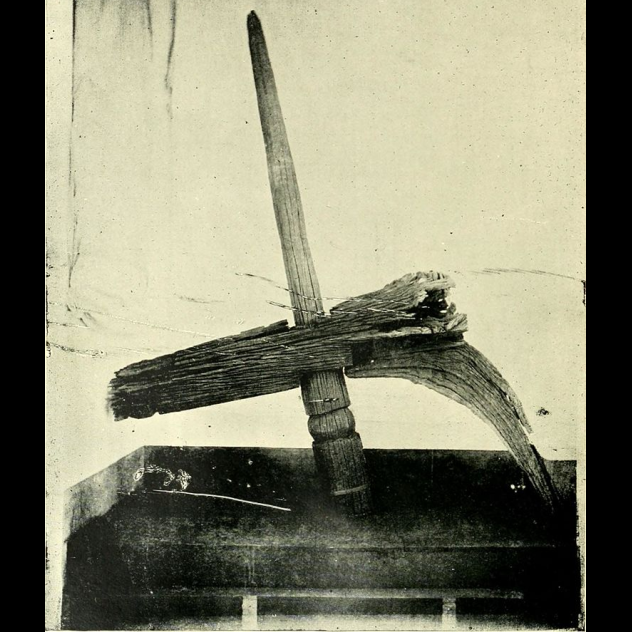
In the 1840s, Major S.C. Macpherson lived among and studied the Khonds of Orissa in India. Over the next few decades, he wrote about and documented beliefs and practices that seemed shocking to Western eyes, such as killing infant girls to prevent them from growing up to cause trouble and become the target of witch-hunters.
He also recorded, studied, and lobbied for putting an end to a sacrificial ritual that he observed when he was living among the Khonds. The Khonds worshiped a creator god called Boora Pennu, and just beneath him in their hierarchy were the Earth goddess Tari Pennu and other deities. They were responsible for things like rain, hunting, and war, and they were honored with human sacrifices by some Khond sects. (Others found the idea of human sacrifice horrifying and claimed that those who practiced it had been deceived into doing so by a false god.)
Sacrifices were made to ensure fruitful harvests and were also occasionally done if a major tragedy struck the village. The sacrificial victim was variously called a tokki, a keddi, or the meriah. They were often either purchased or kidnapped from another village or were “hereditary victims,” born into a family whose purpose was to produce sacrificial victims. Since it was believed that the victim became a God when they were sacrificed, it wasn’t always as dismal a prospect as it probably should have been. In the time leading up to the ritual, the designated meriah was given complete sexual run of the village, and the husband or father of any woman he chose considered the act a blessing from the gods.
The ritual itself lasted anywhere from three to five days, and it started with the shaving of the meriah‘s head and a massive party. The next stage began with a bath, new clothes, and a parade, which ended when the meriah was seated, tied to a stake, covered with garlands of flowers, oil, and red dye, and worshiped by his people. Before the final sacrifice, the meriah was given milk. He was fastened to a post (pictured above) with his arms and legs broken (to ensure that he wouldn’t resist). The priest in charge of the sacrifice struck the first blow, and the people cut the body (aside from the head) into pieces that would be buried in every field that needed the blessing of sacrifice.
Afterward, a buffalo was sacrificed, and its remains were left as an offering for the spirit of the meriah.
9 The Initiation Rites Of The Eleusinian Mysteries
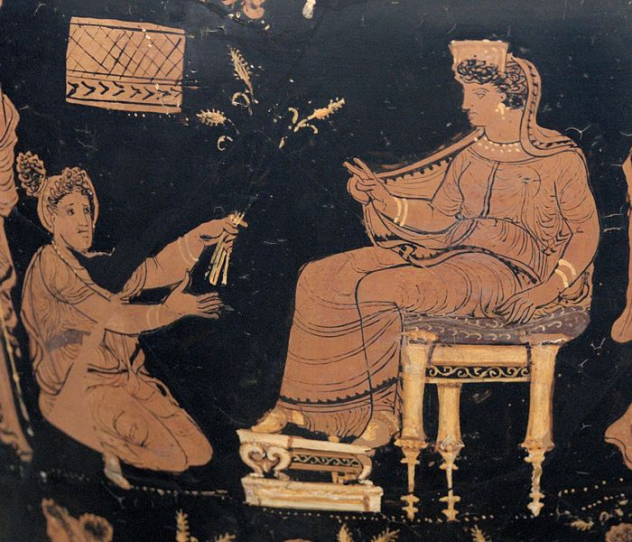
The Eleusinian Mysteries were set of traditions that existed for around 2,000 years, finally dying out sometime around AD 500. At the center of the cult practicing them was Persephone, kidnapped by Hades and forced to spend a few months each year with him in the Underworld and the rest with her mother—the ancient Greek explanation for winter.
The only requirements for entry into the cult were the ability to speak Greek and having never committed a murder. Aside from that, anyone—even women and slaves—were accepted, and an initiation ceremony kicked off a person’s access to the cult’s secret knowledge. Much of that knowledge has been lost, but we do know what the initiation ceremony entailed.
The mass initiation in Athens started on the 15th day of what’s now September. The day after the first gathering, the prospective initiates (and their animal sacrifices) were sent to the ocean to purify themselves. (This didn’t always end uneventfully, as in 339 BC, one was attacked and killed by a shark.) After a three-day rest, the assembled procession left on a 24-kilometer (15 mi) journey, replete with things like singing, music, and calling on Iacchus (who was associated with Dionysus) to usher in the night.
The next day began with sacrificial bulls being lifted by initiates and carried to sacrifice. Over the next few days, initiates were washed and taken into the final ceremonies. The lower orders’ ceremony involved the acting out of the Persephone-Demeter myth. What went on in the higher levels of the order is a bit more of a mystery, but there are a number of clues, like writings that suggest that there was a lot of dancing and that at least a part of it was absolutely terrifying, possibly because people were drinking something mild-altering.
When the initiates reached the end of their long journey to Eleusis, they drank their share of a beverage called kykeon. What exactly the drink was is debated, but we know it was made from barley and pennyroyal, and it was likely a hallucinogenic. The barley would have been infested with the parasite ergot, and the drink would have caused effects similar to an LSD trip.
8 The Aztec Sacrifice Of Tezcatlipoca
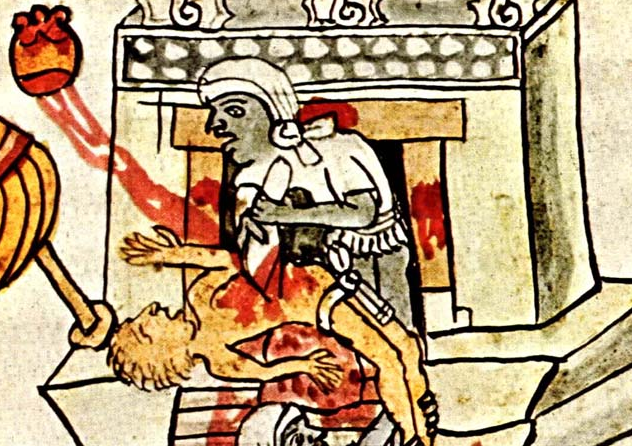
The Aztecs were widely known for their human sacrifice, but a lot of what went on in their sacred rites has been lost. Diego Duran, a Dominican priest, wrote a huge amount on the Aztec rituals that he studied. He didn’t attend them, but he interviewed those who did. What emerged was a picture of human sacrifice as a theater production.
Aztec sacrifices happened on a surprisingly frequent basis, and Duran (as well as Franciscan missionary Bernardino de Sahagun) describes one festival that included the sacrifice of a man who was dressed as and given the persona of the god Tezcatlipoca. He would have been picked out of a group of warriors who had been captured from a neighboring state, selected for his physical beauty and a few other traits like a slender build and perfect teeth. Blemishes on the skin or even a speech impediment would disqualify someone from the position. If he gained weight in the year over which he was being coached and prepped for his starring role, he would be forced to drink saltwater until the weight was gone.
After the year of preparation and training, he would be dressed in the traditional costume of Tezcatlipoca and assigned his name. For a few months, he would live in the temple, be visited and worshiped by the upper echelons of society, and lead parades through the city before being locked in a cage at night to keep him from escaping. For 20 days before his sacrifice, he was given four wives to do whatever he wanted with, and his hair was cut in the style of a warrior captain and adorned with a heron feather.
On the day of the sacrifice, he would be restrained by four priests holding his arms and legs, while a fifth cut out his heart and threw it in his face. The body was then thrown down the stairs of the temple in a symbolic gesture, showing that he’d first been raised to the level of a god and then transformed again—into food for the gods. His head would later be removed, punctured, and added to the city’s skull rack in what would be the final transformation.
7 The Mass Of Saint-Secaire

Sir James George Frazer was a Scottish anthropologist who studied the evolution of magic into religion and finally, the shift into science. In his seminal work The Golden Bough, he detailed a terrifying dark mass that was said during the most desperate times in the Gascon region of France. Only a handful of priests knew the ceremony, and most wouldn’t even say it, as it meant damning their soul to a point beyond typical pardon. Only the pope himself could undo the damage done by saying the Mass of Saint-Secaire and pardon anyone who dared perform it.
The mass was said in a ruined or abandoned church, and as the clock struck 11:00 PM, he would begin saying the regular mass backward and end it at the stroke of midnight. The communion host for the mass was black, and instead of wine, the priest and his attendants drank water from a well that was the horrible final resting place of an unbaptized baby. When the priest made the sign of the cross, he drew it not on himself but on the ground (using his left foot). According to Frazer, other things went on, too—things that “no good Christian could look upon without being struck blind and deaf and dumb for the rest of his life.”
The mass was said with a particular target in mind, and once it was done, that person would grow sicker and sicker, wasting away and finally dying. Doctors wouldn’t have been able to find anything wrong with him or any reason for his illness, and no one would have suspected that he’d been cursed by a dark mass.
6 Kawanga-Whare
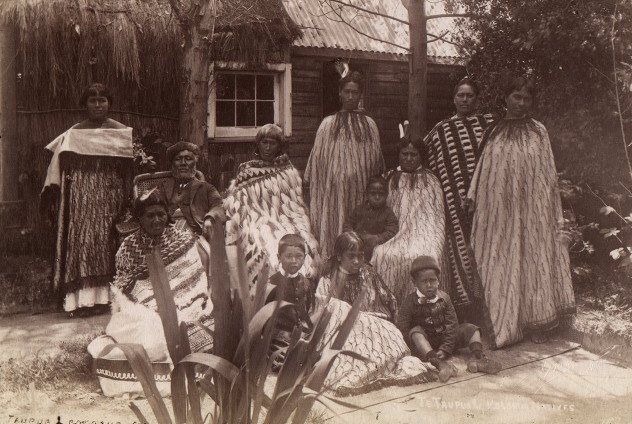
According to Maori belief, a ceremonial ritual needs to be performed to make a new house safe for its inhabitants. Because the trees that were killed, cut, and used in its construction are protected by the Tane-mahuta, god of the forest, the people who used them need to be protected from the wrath of the gods.
During the home’s construction, incredible care was taken with things like wood chips and shavings. They were never used for cooking fires, and workers also refused to blow away sawdust. They brushed it away instead, as their breath could pollute the purity of the trees.
Once the house was finished, a tohunga said a prayer over the new home, releasing the sacred wood from the protection of the forest god. Another chant was them performed, which removed any enchantment that had been left behind by the tools used to build the house and carve the wood. The last incantation was an appeal to the gods to keep the house and its inhabitants safe. Once the prayers were complete, the house is considered an aspect of the Tane-mahuta. The first person to enter the home was a woman (in order to make it safe for all other women), and then traditional foods were eaten and water was boiled to make sure that the inside of the house was safe, too.
This is all based on a witness who saw the performance of the sanctifying ceremonies in 1908, but the account left out a major part of what used to be included in the ritual—child sacrifice. The Taraia tell a story of man who had his own child sacrificed and buried with one of the supporting posts of the house. Another version of the story claims that the child had a last-minute reprieve, and the child of one of the man’s slave wives was killed and buried instead.
The sacrificial part of the ritual varied. In some places, the person was still alive when they were put in place, usually near a support beam, where they were left to hold up the house. Sometimes, they were killed before they were buried. Sometimes, they were put in the hole and killed by having stones and boulders piled on top of them. The victims came from certain families who had a duty to provide sacrifices. Reverend W. Gill wrote about one instance in which a man was shunned from his community for the actions of his grandfather, who had refused to be sacrificed. The man’s brother had taken his place, and all his descendants remained outcasts.
5 The Mithras Liturgy
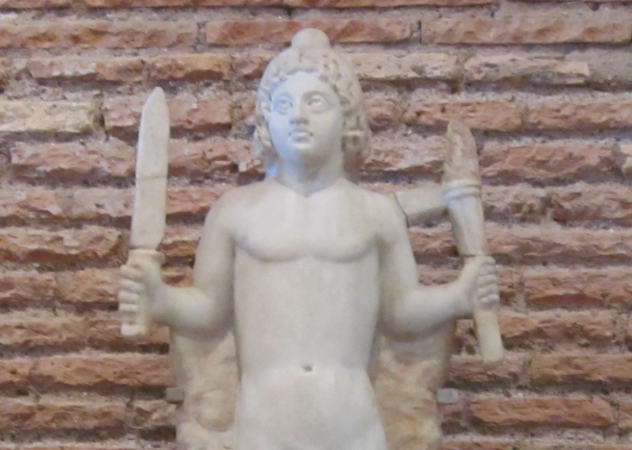
The Mithras Liturgy walked the line between spell, ritual, and liturgy. Found in the Paris Papyrus, the liturgy is rather mysterious as far as texts go. The connection between the Persian Mithras, the Roman one, and the Egyptian gods and imagery isn’t clear, and while that’s enough to give scholars nightmares, the liturgy on its own is a pretty unsettling look into the mystery cult.
The ritual was performed with the goal of elevating a single person through the different levels of the heavens and into the company of the various gods of the pantheon. Mithras sits at the top, and along the way through this journey through the heavenly afterlife, the person in question is guided past gatekeepers and through the realms of Earth, heaven, and into supraheaven.
While “heaven” might conjure up images that are largely positive, that’s absolutely not the case. Built into the liturgy are instructions and prayers to be used against the more dangerous celestial beings, those that aren’t happy with the idea of someone heading up into their realm. While it’s a simple saying that’s supposed to protect the person (“Silence! Silence! Silence! Symbol of the living, incorruptible god, Guard me, Silence! Nechtheir Thanmelou!”), it also relies on establishing the visitor as a god himself.
The ritual itself was performed in a few stages. After an introduction, the spirit was guided through the four different elements (including things like thunder and lightning) and then faced the guardians of the door to the heavens, the Fates, and up through to Mithras himself.
The liturgy also contained instructions for preparing protective amulets (and what to do with them), a magical cake for the scarab ceremony, and even breathing exercises for the journey. It was only after going through realms of hissing, angry gods and heavenly fire and brimstone that one get to meet the fire-haired, white-clad Mithras. Those who did also needed protection against him, too, if they wanted to be honored with a revelation and consecration as a god.
4 Bartzabel Working
According to the teachings of Aleister Crowley, Bartzabel is a demon that embodies of the spirit of Mars. Crowley claimed to have summoned and spoken with the demon in 1910. He said that the creature told him that there would soon be major wars starting in Turkey and Germany and that the wars would mean the destruction of life and nations on an epic scale.
Even though he only conveniently remembered this conversation in 1914, Crowley still wrote up his ritual for summoning the demon. He detailed how to draw the pentagon and the circle, which demons’ names to include, and how to draw the Sigil of Bartzabel. There is proper attire for everyone involved, plenty of other sigils, and diagrams on how to set up the altar with its spear, torch, holy oil, and images.
The ritual itself was an incredibly long set of appeals and actions, involving lines like, “May the Names of God that gird us, Be our sign that he hath heard us!” and walking around the altar while carrying weapons. The first part of the ritual involved consecration of the area, the second the preparation of the materials, and the third the invocation of the spirit himself. Part four detailed the format for the interactions with the demon, and Crowley even recorded just what went on in his face-to-face Q&A with the creature. Bartzabel was then given license to depart.
In 2013, Los Angeles–based performance artist Brian Butler performed the ritual in front of thousands of people, the largest group to have ever bore witness to one of Crowley’s rites. A blindfolded and bound man acted as the receptacle for the spirit of the demon. According to Butler and the witnesses, the whole thing went off without a hitch.
3 The Sacrificial Messengers Of The Unyoro
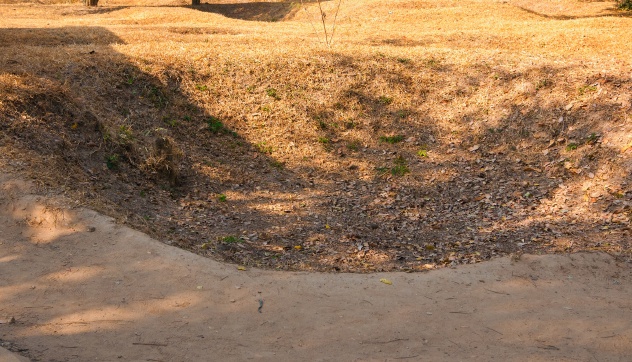
James Frederick Cunningham was a British explorer who lived in Uganda during British occupation and wrote extensively on his interactions with the different people he encountered and documented the cultures he found there. In his work Uganda and its Peoples: Notes on the Protectorate of Uganda, he recounted one group’s ritual for honoring the death of a king.
A pit about 1.5 meters (5 ft) across and 4 meters (12 ft) deep was prepared. The bodyguard of the dead king would go out into the village and grab the first nine men he came across. Those men were thrown into the pit alive, and then the body of the king, wrapped in bark cloth and cowhide, was placed into the pit with them. Another piece of cowhide was then stretched over the top of the pit and secured on all sides. A temple was built over the grave, which was the new home of the surviving servants of the dead king as well as their descendants.
The idea of human sacrifice as providing messengers or guides to the dead is an old one, but Cunningham seemed shocked over the method in which the sacrifices were chosen then sealed inside what would become their tomb.
Cunningham also noted a practice observed by the members of another group, one that went a long way in explaining some of the difficulties translators were facing. When a person died, the survivors would never say the person’s name again in any context. That was particularly problematic when the name was a common word, like an adjective or animal. The word would be removed from the group’s vocabulary and replaced with something new, a huge problem for any outsiders trying to understand their language.
2 Nazca Trophy Heads Ritual
Take a look at some of the traditional art from the Peruvian Nazca (or Nasca) people, and you’ll see a disturbingly common motif—the trophy head. Archaeologists have sifted through pictorial and physical evidence to try to figure out what kind of rites and rituals were performed with and around these heads, and they’re pretty gruesome.
The Nazca were only one of two South American cultures that prepared trophy heads for a ritual use. (The other was the Paracas.) After the head was severed using an obsidian knife, pieces of bone were removed, and the eyes and brain were extracted. A hole was made for a rope that would typically ultimately attach the head to a cloak. The mouth was pinned shut, and the skull was filled with cloth.
It’s thought that the preparation of the heads was the first step in the ritual process, and the entire thing revolved around a shaman who served as something of a gatekeeper between the world of the living and the next life. While archaeologists haven’t been able to piece together a concrete timeline of what was done with the heads, they have many illustrations that depict particular moments. The heads feature heavily in images that also include cacti, huge storage jars, and people drinking, making it certain that ritual drinks played a big part in the ceremony. The drinks were most likely hallucinogenic, made from the San Pedro cactus, and seem to have been the key that opened the gate to the spirit world. Other images show processions of people and the playing of instruments like drums, trumpets, pipes, and rattles.
The Nazca culture grew out of the earlier Paracas, and both are associated with an image called the Oculate Being. The figure, which is central to religious rites and beliefs, has an oversized head and eyes and a tongue that sticks out of a smiling mouth. It is decorated with snakes and often holds a trophy head or the instruments used in their preparation.
The ritual use of the trophy heads seems to have ended with their burial. Caches of heads have been discovered, buried in groups ranging from three or four to more than 40, some buried inside jars.
1 Capacocha
The ritual of Capacocha was the Incan practice of child sacrifice, usually done only when life was becoming extreme. According to written records left behind by Spanish conquistadors, the sacrificial victim was usually the child of a chief, and sacrifices were usually performed during or after ordeals like drought, famine, or the death of an Incan emperor. It was a major honor for a child to be chosen as a sacrifice. Only the most perfect children would be selected to be deified through Capacocha, and their families would enjoy an elevated status as relations of this worldly god.
After the child was chosen, the ritual would begin with a procession from the child’s village to Cuzco, the heart of the Inca Empire. Major construction projects would be started to prepare the mountain to receive its sacrifice, including a sacrificial platform, a burial site, and in most cases, a number of buildings and shelters at the base of the mountain to act as a sort of staging ground. The child’s final resting place was usually a tomb-like structure that also contained ritual and ceremonial offerings.
On the chosen day, the child was given chicha, a type of alcohol brewed from corn, and was then taken up to the mountainside platform. What happened next has been hotly debated by archaeologists. Many of the victims who have been examined bear skull fractures, and some contend that the blow, always to the back of the head, was meant to knock the children unconscious before they ultimately died from exposure. Other injuries and illnesses, such as bronchitis and damage to sinus cavities, suggest that the children weren’t accustomed to the high altitude that they were finally buried at. The presence of vomit and feces on their clothes also suggests that they absolutely weren’t willing participants. Some of the children, like the Llullaillaco boy, were bound, and some of the bodies show signs of strangulation. Accounts by Spanish explorers who witnessed the ritual speak of ritual violence visited upon the children, and the more archaeological evidence that’s uncovered, the more their testimonies are supported.
While it was undoubtedly of little comfort to the families or the children themselves, the rituals associated with the children, who were always well-clothed, well-fed, and well cared for, were done because they felt they had no other choice. They were a link between the natural and the supernatural, a way of controlling the fate of an entire people, and the children were elevated to the status of a deity for their sacrifice.



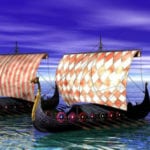
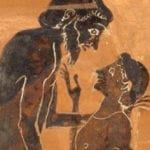
![Top 10 Dark Facts About The Death Penalty [DISTURBING] Top 10 Dark Facts About The Death Penalty [DISTURBING]](https://listverse.com/wp-content/uploads/2020/06/deathpenalty-150x150.jpg)


